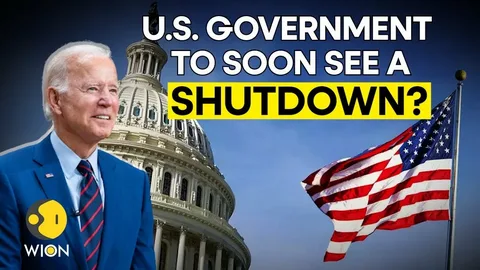A government shutdown is a situation where the federal government of a country stops providing non-essential services because there is no agreement on funding. In most cases, this happens when lawmakers in the country, such as members of parliament or congress, fail to pass a budget or funding bill in time. As a result, many government operations are paused until the issue is resolved.
In the United States, for example, the government must pass a new budget each year by a certain date. If the deadline passes without agreement on how to spend money, a shutdown occurs. While essential services like national defense, air traffic control, and emergency healthcare usually continue, many other departments and agencies are temporarily closed.
A government shutdown can affect millions of people. Federal employees may be sent home without pay, public services may stop, and people who rely on government assistance might face delays. Tourists may find national parks and museums closed. Even passport and visa applications can be delayed. These effects vary depending on how long the shutdown lasts.
One key reason a shutdown happens is political disagreement. Different political parties may have conflicting views on how money should be spent. Some may want to increase funding for healthcare, while others may want to cut taxes or spend more on defense. If these groups cannot find common ground before the deadline, no budget is approved and the shutdown begins.
The economic impact of a government shutdown can be significant. When thousands of government workers stop receiving pay, they may reduce their spending, which can hurt businesses, especially small ones. Delays in government contracts and services can also affect companies that rely on federal work. The longer the shutdown continues, the more harmful the effects become.
For ordinary citizens, a shutdown can be frustrating and confusing. People who need government support may not know when they will receive their benefits. Parents who planned family trips to national parks may have to cancel them. Government websites may go offline, and public programs like educational or housing assistance can be temporarily paused.
Despite all these problems, some shutdowns have occurred multiple times in history. In countries like the United States, this is a part of the budget process, especially when political tensions are high. Lawmakers eventually reach an agreement, and the government reopens. Employees are often paid back for the time they missed, but the lost time and services cannot always be recovered.
There are also long-term consequences of repeated shutdowns. They can damage public trust in the government and create a sense of instability. Foreign investors may also lose confidence in a country’s economy if shutdowns become frequent. For federal employees, the uncertainty can be stressful, especially when they do not know how long they will be without work or pay.
In some countries, systems are in place to avoid shutdowns. Automatic funding extensions, also known as continuing resolutions, can temporarily keep the government running while discussions continue. However, even this is not always enough if political leaders strongly disagree.
It is important to note that not all parts of the government shut down during a funding crisis. Services that are considered essential continue to operate. This includes military operations, law enforcement, and emergency medical care. However, services like research, public health programs, education support, and environmental protection are often affected.
In conclusion, a government shutdown occurs when political leaders cannot agree on how to fund the government. This leads to the suspension of many non-essential services and can create problems for citizens, businesses, and the economy. While essential operations continue, the overall impact can be serious, especially if the shutdown lasts a long time. Understanding what causes shutdowns and how they affect people can help citizens stay informed and prepared.













Comments are closed